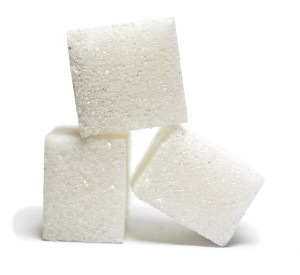The government recently released the 2015-2020 Dietary Guidelines. These Guidelines have been set by the U.S. Department of Agriculture (USDA) and the U.S. Department of Health and Human Services (HHS) since the 1980s.
The purpose of these Guidelines is to inform the American public of the latest research concerning nutrition, and how it applies to them, including specific dietary recommendations. Over the years, these Guidelines have changed drastically in some ways, and in other ways have barely changed. The Guidelines are supposed to be informed by various scientific studies, and one would hope that the recommendations given are unbiased and to promote health in the American people. Yet due to the pull of lobbyists for big food corporations, who are paid to influence policy-makers, the Dietary Guidelines continue to remain vague, and scientifically outdated.
The Dietary Guidelines Do Not Work
So what is my problem w ith the Guidelines? Um, where do I begin? I looked over the 2010 Guidelines to see if anything had really changed in the updated version. Short answer? Not really. They throw around the same terminology and the same concepts. “Eating Patterns,” “Calorie balance,” and “Nutrient-Dense.” Yet, like the updated Guidelines, they really don’t say anything. Everything is very vague. The Guidelines are very subjective, and continue to dwell on calorie restriction. Although they note the rise of chronic diseases in relation to a “poor quality diet and physical inactivity”, the Guidelines fail to provide proper dietary advice. They are pointing out the problems that people are having due to poor diet, but they are not providing sound advice that will resolve these problems.
ith the Guidelines? Um, where do I begin? I looked over the 2010 Guidelines to see if anything had really changed in the updated version. Short answer? Not really. They throw around the same terminology and the same concepts. “Eating Patterns,” “Calorie balance,” and “Nutrient-Dense.” Yet, like the updated Guidelines, they really don’t say anything. Everything is very vague. The Guidelines are very subjective, and continue to dwell on calorie restriction. Although they note the rise of chronic diseases in relation to a “poor quality diet and physical inactivity”, the Guidelines fail to provide proper dietary advice. They are pointing out the problems that people are having due to poor diet, but they are not providing sound advice that will resolve these problems.
Key Recommendations
In the section called “Key Recommendations”, they mention types of foods that we should be eating. Let’s take a look at their recommendations.
 Eat a Variety of Vegetables and Whole Fruits.
Eat a Variety of Vegetables and Whole Fruits.
This is a no brainer! We definitely need to eat a variety of fruits and vegetables, and more of them. However, I think that this is pointing out the obvious. Most people know that fruits and vegetables are good for them. I personally recommend that my clients include greens and/or vegetables at every meal of the day. I wish that the Guidelines were more specific with “more”.
- Eat grains, at least half of which are whole grains. Because there is no specificity here, this means that I could eat a big bowl of sugary, processed cereal for breakfast, some “whole grain”, highly processed sandwich bread for lunch, and a bowl of whole wheat pasta for dinner. I would not consider these foods to be nutrient dense. However, I would be eating according to the Guidelines. There is no mention of the fact that factory processing grains into flour strips them of their nutrients. They also do not mention the synthetic vitamins, that are not readily absorbed by our bodies, which are added
 back into the flour after it is processed. There is no discussion about the fact that the wheat we eat today has been hybridized and changed completely from the wheat that our ancestors grew and consumed, which makes digestion and nutrient absorption difficult. There is no mention of all the additives, stabilizers and other chemicals that are present in most of our grain-based products. I can walk through the grocery store and see the label “whole grains” on countless items. However, I would not consider most of these items to be nutritious. All of these factors contribute to numerous health problems, yet this is not addressed. This article, The Problem With Grains, by Katie, “The Wellness Mama” is a great summary of how wheat has changed over the years.
back into the flour after it is processed. There is no discussion about the fact that the wheat we eat today has been hybridized and changed completely from the wheat that our ancestors grew and consumed, which makes digestion and nutrient absorption difficult. There is no mention of all the additives, stabilizers and other chemicals that are present in most of our grain-based products. I can walk through the grocery store and see the label “whole grains” on countless items. However, I would not consider most of these items to be nutritious. All of these factors contribute to numerous health problems, yet this is not addressed. This article, The Problem With Grains, by Katie, “The Wellness Mama” is a great summary of how wheat has changed over the years.
- Eat fat-free or low-fat dairy. I tend to take a more ancestral approach when it comes to nutrition. In most historical cultures, that I’m aware of, people have never opted for fat-free or low-fat dairy. In fact, the fat was considered a critical component. Full fat milk contains the important vitamins, A, D, E and K, which all fat soluble. This means that that they need to be consumed with fat to be properly absorbed by our bodies. Also, many low-fat and fat-free dairy products contain added sugars and other chemicals to help improve their flavor.
- A variety of protein foods. Of course we need protein. But “protein foods”? This means that I can eat beef, poultry and pork from overcrowded factory farms, where the animals live in unsavory conditions and are regularly given doses of antibiotics to help fight off infections, and are often fed GMO corn. Farm-raised fish, which are full of toxins, pesticides and chemicals, and are also given antibiotics, would be given the green light too, under the blanket of “protein foods.” Oh, and don’t forget processed soy foods, like soy hot dogs and soy burgers, most of which are GMO. With proteins especially, the quality of the food, and where it is sourced from makes a huge difference in its nutrient density.
- Oils. So just to be clear, this means that vegetable oils, which are very unstable, are derived from GMO plants, and are rancid by the time they reach supermarket shelves are included under the umbrella of “oils”. Putting these types of oils into our bodies creates oxidative stress, and contributes to the formation of free radicals. Unfortunately, vegetable oils are highly recommended by various high profile organizations, such as the American Heart Association and the US National Library of Medicine, as being healthier than butter. Instead of helping us to become healthier, these oils have the exact opposite effect.
After what we are told to eat, we are briefly told what foods we should limit. This includes:
- Saturated fats and trans fats. As far as trans fats go, I think that using the word “limit” is a mistake. This
 should be categorized as “avoid”. Trans fats are derived from vegetable oils and are not naturally occurring. They were developed to be used as an ingredient in processed foods to help make them more shelf stable. They have a huge list of health risks associated with them, and really should be avoided.
should be categorized as “avoid”. Trans fats are derived from vegetable oils and are not naturally occurring. They were developed to be used as an ingredient in processed foods to help make them more shelf stable. They have a huge list of health risks associated with them, and really should be avoided.
On the other hand, saturated fats are good for us. They are necessary for our body to function properly. They have been demonized over the years, but fats such as tallow, lard, coconut oil, and butter were used for generations.
In fact, the whole idea that saturated fats should be avoided at all costs arose from  one faulty study performed by Dr. Ancel Keys in 1958, called the Seven Countries Study. He wanted to see if he could find a connection between dietary fat and blood cholesterol. His conclusion was that in countrieswhere fat consumption was high, there was a greater presence of heart disease. Therefore, the consumption of saturated fats must be connected with heart disease. However, drawing a correlation is not that simple. The main problem with his study was that he selectively chose countries whose populations corroborated his hypothesis. After this study was published, the American Heart Association and the US Government changed their guidelines concerning fat consumption.
one faulty study performed by Dr. Ancel Keys in 1958, called the Seven Countries Study. He wanted to see if he could find a connection between dietary fat and blood cholesterol. His conclusion was that in countrieswhere fat consumption was high, there was a greater presence of heart disease. Therefore, the consumption of saturated fats must be connected with heart disease. However, drawing a correlation is not that simple. The main problem with his study was that he selectively chose countries whose populations corroborated his hypothesis. After this study was published, the American Heart Association and the US Government changed their guidelines concerning fat consumption.
- Added sugars and sodium. Natural sodium, such as sea salt, is full of beneficial minerals and is a necessity for our bodies to function. If we eat eliminate processed foods and eat a diet of whole foods, there should be no need to limit sodium. I would rephrase this as “limit sodium from processed foods.”
Added sugars should definitely be limited. However, the Guidelines specify that we should “consume less than 10  percent of calories per day from added sugars.” Keep in mind that added sugars are not naturally occurring ones, such as those found in fruit. These are sugars found mainly processed foods and contribute to a host of health problems. Why wouldn’t we be told to avoid added sugars, instead of limiting them?
percent of calories per day from added sugars.” Keep in mind that added sugars are not naturally occurring ones, such as those found in fruit. These are sugars found mainly processed foods and contribute to a host of health problems. Why wouldn’t we be told to avoid added sugars, instead of limiting them?
What I found really interesting is the percentage they gave – – less than 10 % per day from added sugars. If I consume an average of 2000 calories per day, and 8% of my calorie consumption comes from added sugars, that is a total of 40 grams of added sugars per day. Again, this does not included sugars from fruit. This is not doing my body any good, and yet I would still be within the recommended Guidelines.
Money Plays A Huge Role in Food Policy
So here you have it, government approved guidelines for a “healthy eating pattern”. Food quality is the crucial factor in this report that has been completely ignored. The Guidelines repeatedly report the rise of chronic disease and the need for better nutrition in order to improve the health of the population. They point to the billions of dollars that are being spent on medical care for these conditions. So why can’t these Guidelines specifically state that it is processed oils and foods, filled with chemicals and additives, as well as sugary beverages that are a direct cause of these problems? Why is much of the up to date research regarding saturated fats and cholesterol ignored? Unfortunately, it all comes down to money.
 In their attempt not to offend any lobbyists, the writers of these Guidelines chose to make everything vague and nonspecific. These food lobby associations, who represent companies such as PepsiCo, Cadbury, General Mills, Monsanto, and Nestle USA, are major players in food policy.
In their attempt not to offend any lobbyists, the writers of these Guidelines chose to make everything vague and nonspecific. These food lobby associations, who represent companies such as PepsiCo, Cadbury, General Mills, Monsanto, and Nestle USA, are major players in food policy.
The groups, such as the Grocery Manufacturers Association, have political action committees (PAC) that are allowed to make contributions to political campaigns. So this makes it more compelling for politicians and committees, such as the one that wrote these Guidelines, to play ball with the associations. Otherwise a lot of money could be lost.
However, by catering to big food corporations, the committee who wrote these Guidelines is doing a huge disservice to the health of the people it is supposedly trying to help. Especially since these Guidelines are used inform more vulnerable populations, such as the National School Lunch Program and the School Breakfast Programs, Women Infants and Children (WIC), Supplemental Nutrition Assistance Program (SNAP), as well as the USDA and the US Department of Health and Human Services.
The Takeaway
So what do we do with this information? Become an informed consumer. Learn where your food comes from and read the labels. If it has several grams of added sugar, then it is probably not a healthy choice. If it was made in a factory and has a long list of ingredients, than you probably want to avoid eating it. For more details on which foods to avoid and which will nourish your body, download my free mini guide, “Ten Simple Changes”. If you would like to dive deeper and completely transform your nutrition, schedule a free 30 minute consultation today!
Resources:
http://time.com/4130043/lobbying-politics-dietary-Guidelines/
http://www.pcrm.org/health/reports/agriculture-and-health-policies-unhealthful-foods
http://health.gov/dietaryGuidelines/dga2010/dietaryGuidelines2010.pdf
http://wellnessmama.com/575/problem-with-grains/
http://chriskresser.com/still-think-low-fat-dairy-is-the-healthy-choice-think-again/
http://draxe.com/the-dangers-of-farmed-fish/
http://www.eatwild.com/healthbenefits.htm
https://www.youtube.com/watch?v=8aXTuBYb5-c
http://ajcn.nutrition.org/content/88/4/913.full
http://www.hindawi.com/journals/jnme/2012/539426/
http://www.sevencountriesstudy.com/study-findings/
https://www.opensecrets.org/industries/indus.php?ind=A09++


Leave a Reply